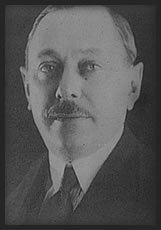Max Glücksmann
Max Glücksmann was born in 1875 in Czernwotiz, a part of the Austrian Empire and today considered modern-day Ukraine. He moved to Buenos Aires, Argentina in 1890 and quickly took up an integral role in the nation’s early film industry. Starting in 1906, Glücksmann became the exclusive agent for the German record company Odeon, who wanted to expand their markets to Argentina. Odeon Records assumed that Argentinian consumers wanted to listen to “local” Argentine music, which increasingly became associated with the tango, although local musicians played other genres such as jazz. By the 1920s, Glücksmann predominately recorded tango bandleaders and singers who formed the “old guard” style within the popular tango genre. Glücksmann’s biography emphasizes the globalization of the commercial music industry: an immigrant who served as a “local” intermediary for a foreign record company to identify seemingly “local” music that only represented one genre out of many that Argentinian musicians were trained to play.
